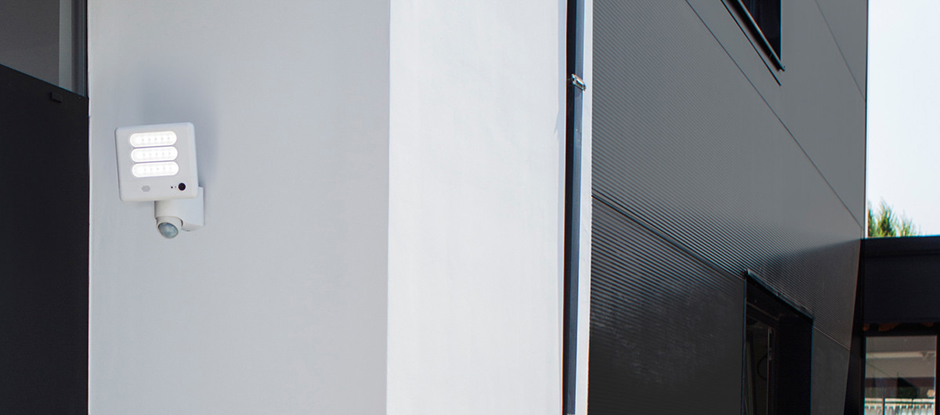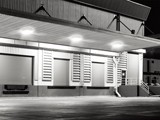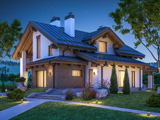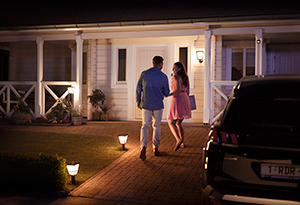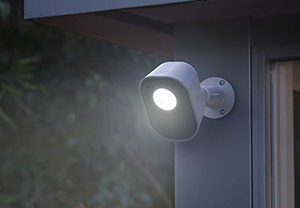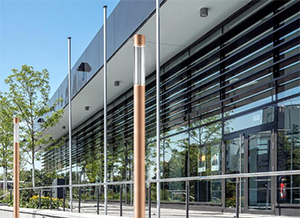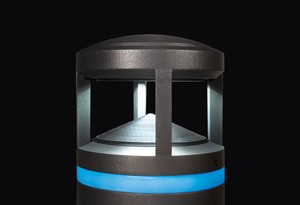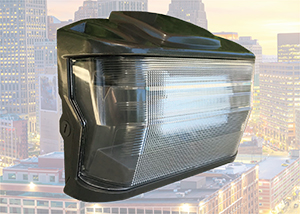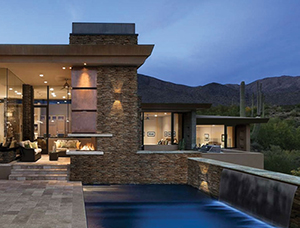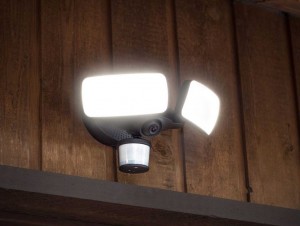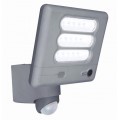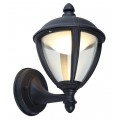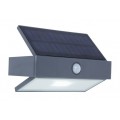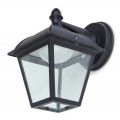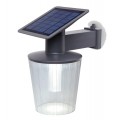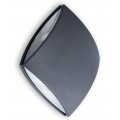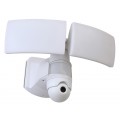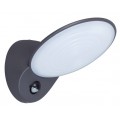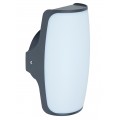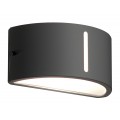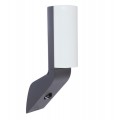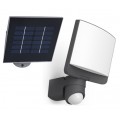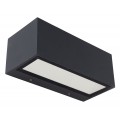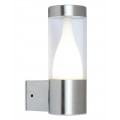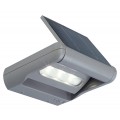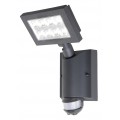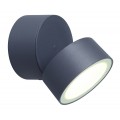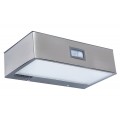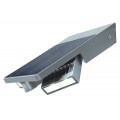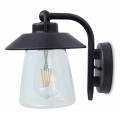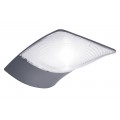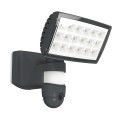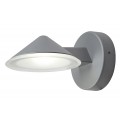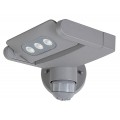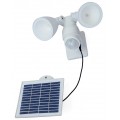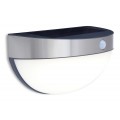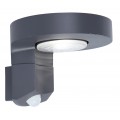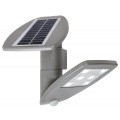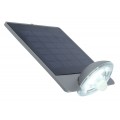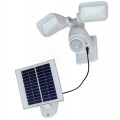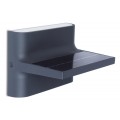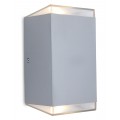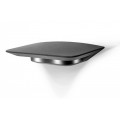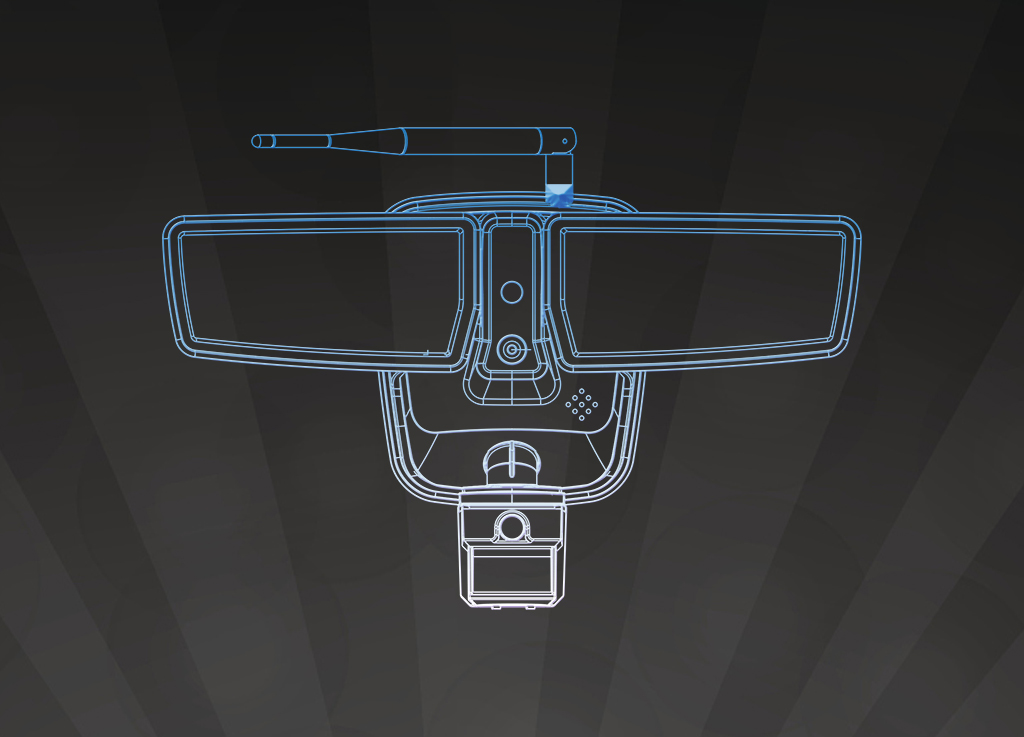
A security light is a security element that is installed to help protect people and property from nighttime offenses and criminal activities, and to create a perception of safety and security. Security lighting is a broad term that describes all types of lighting having an impact on the incidence of crime. Outdoor lighting systems, such as street lights, parking lot lights, pathway lights, and exterior wall lights, all aid in citizen protection and crime reduction while serving their primary lighting goals. Security lights, when they are mentioned in the consumer market, usually refer to lighting products that are specially designed to create effective zones of protection and facilitate the detection and/or deterring of intruders approaching or attempting to gain entry into protected areas.
How Lighting Contributes to Security
Security lighting extends far beyond simply illuminating an area. It aims to create a security zone which is designed around vulnerabilities and target-hardening practices. In residential and commercial applications, the security zone can be a building perimeter or a point of entry to a building. A security light provides a clear view of an area from a distance, with a visibility that permits facial identification and risk evaluation. At the same time, illumination of a security zone can reduce criminal concealment and discourage intruder access attempts by increasing fear of detection. Most often, security lights work in unison with intrusion detection and control systems. Integration of illumination facilitates the nighttime effectiveness of other security elements such as video surveillance equipment and interactive alarms systems.
How LED Technology Revolutionized Security Lighting
A light emitting diode (LED) is a semiconductor device that produces light when electrical current is passed through its p-n junction. Radiative recombination of electrons and holes in the active region of InGaN dies produces monochromatic blue light, which is then partially phosphor-converted to broad spectrum light. The broad spectrum light mixes with the unconverted blue light to produce what is perceived as white light by the human eye. Phosphor-converted LEDs (pc-LEDs) exhibits a high energy efficiency that significantly relieves the burden of high energy costs occurring on traditional lighting systems. A long operational life over which virtually no maintenance is required consolidates the unmatched economics of LED lighting. The compact, directional natures of LEDs enable precise optical control and high uniformity illumination that are highly desired in outdoor applications.
LED technology brings to security lighting a light source that allows dynamic control of light output. Instant on/off and full range dimming capabilities support diverse needs of lighting control. The inherent semiconductor property of LEDs enables lighting to interact flawlessly with solid state circuits and work seamlessly with digital devices. Marrying LED lighting with digital video surveillance and intelligent networking of embedded sensors greatly enhances the ability to detect potential threats, optimize and manage security while maximizing energy savings. Implementing LED security lights on an IP infrastructure allows remote monitoring, control and configuration, this truly makes security lighting on steroids.
Typical Features
Security elements can be active deterrents which are capable of interacting with intruders, or passive deterrents which are static in nature and incapable of generating a response to an intrusion. Lighting is passive by nature. However, modern security lights are often active in application because they're usually motion-sensor controlled. Motion control not only provides a higher level of energy effectiveness, but also introduces a scare to intruders by turn on lighting suddenly. While frequent switching with motion control can greatly reduce the rated lifetime of incandescent and fluorescent lamps, LEDs are born for high frequency switching, motion control will only increase their calendar life. LEDs which are instantaneously responsive to input sensors and switches also do not suffer from the delays associated with warm-up and restrike of HID light sources. Motion sensors are often used in conjunction with dusk-to-dawn photocontrol for increased energy savings. A photocell detects total photometric light from daylight and turn the light on at dusk and off at dawn automatically.
There's a trend towards multi-element integration in security lighting systems designed for residential applications. Today's security lights are no longer merely a lighting tool that exerts the effect of light to affect behavior of would-be criminals. They are more of a synergistic combination of video surveillance, bidirectional audio interaction, and context aware illumination. These products are equipped with video cameras, microphones for audio capture, and speakers for clear audio and loud alarm siren. These security elements enable video surveillance, two-way audio communication, and panic alarm triggering. Lighting is designed to facilitate the proper use of other security elements integrated in the system while being responsive to controls and reactive to motion events.
Smart Security Lights
The need to orchestrate interactions between security elements and simplify light management kicks off an irresistible movement towards adding processing and communication capabilities, and mobile application control to security lights. A smart security light connects to the Internet through a wireless communication network based on the Wi-Fi, Bluetooth, ZigBee, Z-Wave or Thread protocol. Video motion security lights typically work on 2.4 GHz or 5 GHz Wi-Fi bands as a high data rate is required for video streaming. The smartphone acts as an application layer gateway (ALG) device and allows a user to control and automate all elements of a security light anywhere via a mobile app. The app-controlled lights allow users to access live streams, change light settings, customize motion zones, adjust detection sensitivity, set camera recording modes, receive email alerts and push notifications, interact with visitors on the 2-way intercom, sound an alarm or flash the light to deter burglars, and manage various other features and configurations. The video may be recorded locally onto a memory card or streamed using a cloud storage solution.
Smart security lights are usually a part of a smart home system which makes smart home devices interact with each other. Smart home systems utilize Internet of Things (IoT) technology to monitor, control, automate and optimize various aspects of a home. Integration of security lights into a smart home system heightens the effectiveness of home security systems. An IoT-enabled video motion security light, upon detection of highly specific, pre-defined events, can be programmed to automatically turn an interior light on and give the impression that someone is home, or the light can be configured in a way to dial the police department and execute other safety measures deter potential threats. Connect the smart security light to Apple HomeKit, Amazon Alexa, Google Assistant, or Microsoft Cortana and use voice commands to control lighting. Smart home devices can also be automated by cloud-based task automation platforms such as If This Then That (IFTTT) which allows smart security lights to interact in countless scenarios with other IFTTT-compatible devices.
LED System
LED security lights come in a variety of designs. Typically, the lighting system is designed to produce floodlighting for controlled illumination of an exterior area. Its beam spread and lumen package are dictated by the luminaire location, beam distance, camera resolution, and the task size. Most products have an integrated light source, rather than light bulbs as with traditional lighting systems. Integrated LED assemblies make it possible to achieve high optical efficiency, optimal light distribution, efficient thermal management, and a compact system design. Security floodlights have directional aiming capability. The lamp heads can usually be rotated left or right and tilted up or down to direct light where it is needed. To maximize light coverage, LED security lights may come in a double-head design.
LEDs produce a large amount of localized heat during operation. Thermal buildup within the LED is the primary failure accelerator in LED systems. Not only LED performance and lifespan will be negatively affected by high operating temperatures, the waste heat will heavily stress other co-located electronic components such as drivers, sensors, controllers, cameras, and communication modules. Hence, thermal management becomes a critical part of luminaire design in particular for high lumen and continuous lighting systems. LED security lights usually come with a die cast aluminum construction which lends ruggedness and durability to the housing while providing effective thermal management through conductive and convective cooling. LEDs are mounted on a metal core printed circuit board (MCPCB) which is designed to provide high electrical isolation yet still offer high thermal conductivity. An additional thermal interfacing layer may be placed between the PCB and heat sink to minimize interfacial thermal resistance.
The LED system is operated by a constant current LED driver which regulates the current through the LEDs regardless of operating conditions, variations in LED forward voltage, power supply drift, etc. Dimming is frequently used in smart systems to customize light output. LED drivers can be designed to support pulse width modulation (PWM) and/or constant current reduction (CCR) dimming. The driver executes drive tasks based upon control signals from sensors, control logic circuits, smart home systems, or gateway devices that relay the information from the cloud over the Internet. An auxiliary output is usually provided to power sensors and radios, which eliminates the need for a secondary power supply. Overvoltage, short-circuit, and overload protections are employed to keep the LEDs operating at the rated electrical specifications. The driver is either co-located with the LED system or housed in a separate electrical compartment.
The optical assembly of the floodlight is typically sealed by a tempered glass lens or a plastic lens molded from acrylic or polycarbonate. LEDs are encapsulated packages in which chips are protected from environmental contaminants. However, exposed packages are still prone to moisture penetration as the silicone encapsulant is moisture and gas permeable. Silicone also has a large coefficient of thermal expansion (CTE). This leaves the LED packages under high hygromechanical stresses when moisture is diffused into the encapsulant. Most LEDs used in LED security lights are PLCC-based mid-power packages that have an environmentally sensitive construction. Hence, optical assemblies of outdoor LED luminaires require a high IP rating (IP65+) in order to protect the LEDs against moisture and environmental contaminants and allow high pressure wash-downs. For LED luminaires with external power supplies, the electrical enclosure should be sealed to a minimum IP rating of IP54.
Lighting Quality
Security lighting has a twofold goal. The first objective is to create a comfortable, supportive visual environment for the human eye to perform detection and identification tasks. The second objective is to create the right light for optimal operation of security cameras. The qualities of light have a tremendous impact on the visual perception and camera imaging of a space.
Illuminance, which is the density of light falling onto a surface, is by far the most referenced lighting parameter. Most illuminance measurements about security lighting used to refer to horizontal values. Security lighting requires a minimum horizontal illuminance of 10 lx. In reality, lighting that allows identification of faces is an important aspect of security design. Residential and commercial security lights are mounted on walls or eaves. They're intended to provide sufficient illuminance for facial recognition through peephole security viewers or video surveillance systems. The vertical illuminance for security lighting at exterior doorways should be at least 11 lx, measured 1.5 m above the ground. Vertical illuminance at the face should be no less than one-fourth of the background illumination. Otherwise, the face becomes silhouetted and indistinguishable.
For security lighting products, one of the key design considerations is to produce uniform light output. Uniform illuminance distribution aids in security perception, enhance camera imaging, and reduces the necessity for eye adjustment. Inconsistent light distribution can produce light bomb (full brightness) and black hole (total darkness) effects, which must be avoided at all costs. Security lighting for most applications requires the security zone to be illuminated with an average-to-minimum ratio no higher than 4:1. LED security lights can be designed to spread illuminance uniformly across the security zone through array design and use of secondary optics.
LEDs can be spectrally optimized to security lighting applications. LEDs used for security lighting have a color rendering index (CRI) in the 70 or 80 range, which is a practical and economical solution. This level of color reproduction performance is generally better than legacy lighting systems and is good enough to address most color perception requirements. Color rendering performance can be an important factor in video surveillance. Traditional light sources like metal halide bulbs can produce green spikes in video images due to a surplus of energy in the 500 nm range of the light spectrum. Security lighting with HPS lamps can significantly distort color reproduction and make it difficult to distinguish an intruder's exact clothing color at remote distances. LEDs can be designed to produce a balanced spectrum that enables both the human eye and camera image sensors to accurately percept colors.
Correlated color temperature (CCT) is a spectral specification that must be factored into design considerations. The color appearance of the light can influence psychology, perception and camera imaging. In both outdoor security lighting and video production applications, light with a high CCT (cool white light in the 5000 - 6000 K range) is generally preferred. The wavelengths in the light spectrum of high CCT light have higher sensitivities to the human eye than those of lower CCT light. A burst of high sensitivity light can produce a powerful impact on the psychology of intruders. Cool while light comes with a high scotopic/photopic (S/P) ratio, which indicates more blue in the light spectrum. The relative amount of blue light in a light source results in better visual acuity in low light (mesopic) conditions. High CCT light is an important contributor to high quality video shooting, because digital and video cameras are generally designed to work optimally at high CCTs, such as 5600K. In some residential applications, however, people may prefer a warm ambience. Cool temperatures in the 3500 - 4500 K range will make a good compromise.
Security Cameras
Digital network cameras are the most commonly used type of closed-circuit television (CCTV) cameras in home security systems. All CCTV cameras include three basic elements: image sensor, lens, and image processing circuitry. CCTV cameras convert light (photons) into electronic signals using either charge-coupled device (CCD) or complementary metal oxide semiconductor (CMOS) image sensor technology. Applications requiring high-quality images very often rely on CCD sensors, but IP-based network security cameras typically use CMOS sensors which consume less power than CCDs and are less expensive to manufacturer. Lenses are an important part of the imaging chain in CCTV cameras. They are used to gather light reflected from a subject and deliver an undistorted image to the imaging sensor. Lenses are identified by their focal length which refers to the distance between the optical center of the lens and the image plane. A camera's field of view (FOV) is determined by the lens focal length and the image sensor size. There're three basic types lenses: fixed focal length, varifocal (variable focal length), and zoom. Motorized lenses which allow the FOV to be changed from a remote location are often desired for video surveillance.
Security cameras are required to provide reliable assessment images over varying environmental conditions. Variables to consider when selecting a video surveillance camera includes camera sensitivity, automatic gain control, resolution, signal-to-noise ratio (SNR). All cameras require light, high sensitivity cameras need less amount of illumination to produce a specified output signal. The lens aperture or f-stop is another critical factor that affects the amount of light passing through the image sensor. The lower the f-stop, the wider the aperture, and the more light the lens passes. Auto-iris lenses which have automatic adjustable apertures allow compensation for changing scene light levels. These lenses have a solenoid on them that is controlled by an electronic circuit called automatic gain control. Camera resolution (pixels per frame) is an indicator of its ability to resolve detail in an image. The greater the camera resolution, the greater the amount of detail recorded in the images. SNR refers to the amount of noise created by the camera's electronic signal processing circuits. A high SNR is especially important because electronic signal amplification and processing can magnify the existing errors in the signal and also introduce new errors. A good video camera should have a minimum SNR of 50 dB. Digital noise reduction (DNR) is a common feature designed to remove the noise (raster) from the video image.
Security cameras with Internet protocol (IP) capability stream video over a network using local area networks (LANs), wide area networks (WANs), and/or wireless LANs (WLANs). These network cameras provide many benefits that include remote accessibility, high image quality, advanced search capabilities, simultaneous record and playback, efficient compression and storage options, cost-effective transmission, and the ability to interface and communicate with multiple parallel applications. The captured image in IP-based systems is compressed using the H.265, H.264, MPEG-4, or MJPEG codecs to save storage space and support high speed video streaming.
Video motion detection (VMD) is a fundamental feature in video surveillance systems. The technology is used to detect object motion within the field of view and determine if it falls into the classification criteria for generating an alarm. Upon detecting a valid intrusion motion, the camera will send an alert to an alarm station or a smartphone. VMD makes decisions using a video analytics software which incorporates significant sophistication into the motion analysis algorithms.
Motion Detectors
Motion detectors (occupancy sensors) are used to change the state of a security light (and also a CCTV camera) when motion is detected. Most motion detectors designed for security applications employ the passive infrared (PIR) technology. A PIR sensor is a passive device that reacts to changes in infrared radiation within its field of view. The change in contrast between a heat source and the ambient background temperature is sensed by a pyroelectric device which then converts this change into an electrical signal. The control circuitry in the sensor interprets the signal and determines the occupancy status of the space. Triggering occurs when the changes in the zone reach an established threshold. Because of the small physical size of the pyroelectric device, a Fresnel lens is typically placed in front of the sensor assembly to direct infrared energy toward the pyroelectric device from a wide field of view.
Generally speaking, PIR sensors are the preferred choice of wireless occupancy detection because they are passive and thus they require very little power. These sensors are also inexpensive, rugged, small, and easy to interface with. PIR sensors can detect full body movement from up to 40 feet away. But they are less adept at picking up low motion activities like arm and upper torso movement that is 15 feet away. PIR sensors must have an unobstructed line of sight.
In contrast with PIR technology, microwave occupancy detectors offer greater coverage and sensitivity. Microwave detectors are active volumetric sensors that operate on the Doppler principle. Doppler radar floods a specific area by emitting beams (pulses) of microwave energy. The frequency difference in the reflected microwave energy pattern produced by a moving object is referred to as the Doppler frequency. An internal microprocessor will process the difference between frequencies, and then trigger and connect the load to the supply if it determines the echo from movements in the detection zone constitutes an alarm. With a wide coverage, long detection distance, and the ability to work optimally in most weather conditions, microwave occupancy detection is perfect for wide-open outdoor areas.
Solar Security Lights
A solar security light eliminates the need for line power and allows for flexibility in location and easy installation. Solar panels that comes with wall-mounted security lights are usually small in sizes. Therefore, a high efficiency solar panel is required to produce maximal power output from a small irradiation footprint. Monocrystalline solar panels are generally favored over polycrystalline and thin film solar panels for their high energy conversion efficiency and long lifespan. Photovoltaic systems for security lights typically use lithium-ion or NiMH rechargeable batteries for multiple-cycle charge and discharge operations. To enhance battery performance and battery life, the solar charge controller must not only be able to allow high rates of charging up to the gassing point, it must also ensure that the connected loads don't over-discharge the battery.
Unaffiliated Recommendations
Here's a roundup of some noteworthy products for your reference. (Disclaimer: We're not affiliated with any beneficiary of the external product links in this list.) This is a continuously updated list. We welcome product suggestions from those who take pride in building compelling value into their products. (Owners of products listed here are authorized to use our badge to promote your achievement. Please include a link to this page for listing verification.)
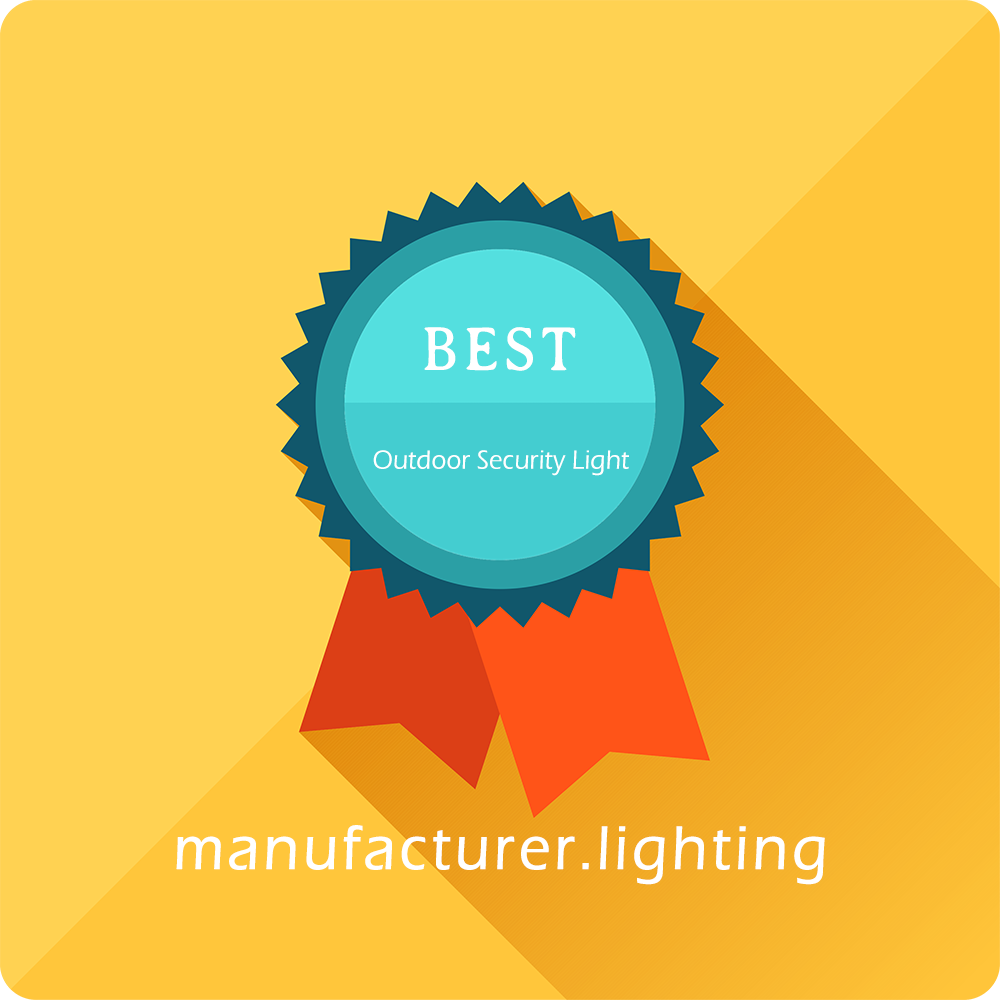
Arlo Pro 3 Floodlight Camera
Arlo Pro 3 is a versatile floodlight camera that brings powerful, energy efficient LEDs, an integrated 2K HDR camera, 160-degree field of view, color night vision, two-way audio, custom lighting configurations and a built-in siren to any home or small business. It also lends itself to a number of applications through a robust suite of smart features with the support of Arlo’s AI subscription-based service, Arlo Smart, which provides access to rolling 30-days of 2K cloud recordings to store and view video clips. Boasting a sleek, fully integrated design, the battery operated smart security camera offers a beautiful exterior security solution to please most discerning users. Aside from the integrated solution, Arlo offers a smart security lighting product that works intelligently by itself or with Arlo Security Camera Systems.
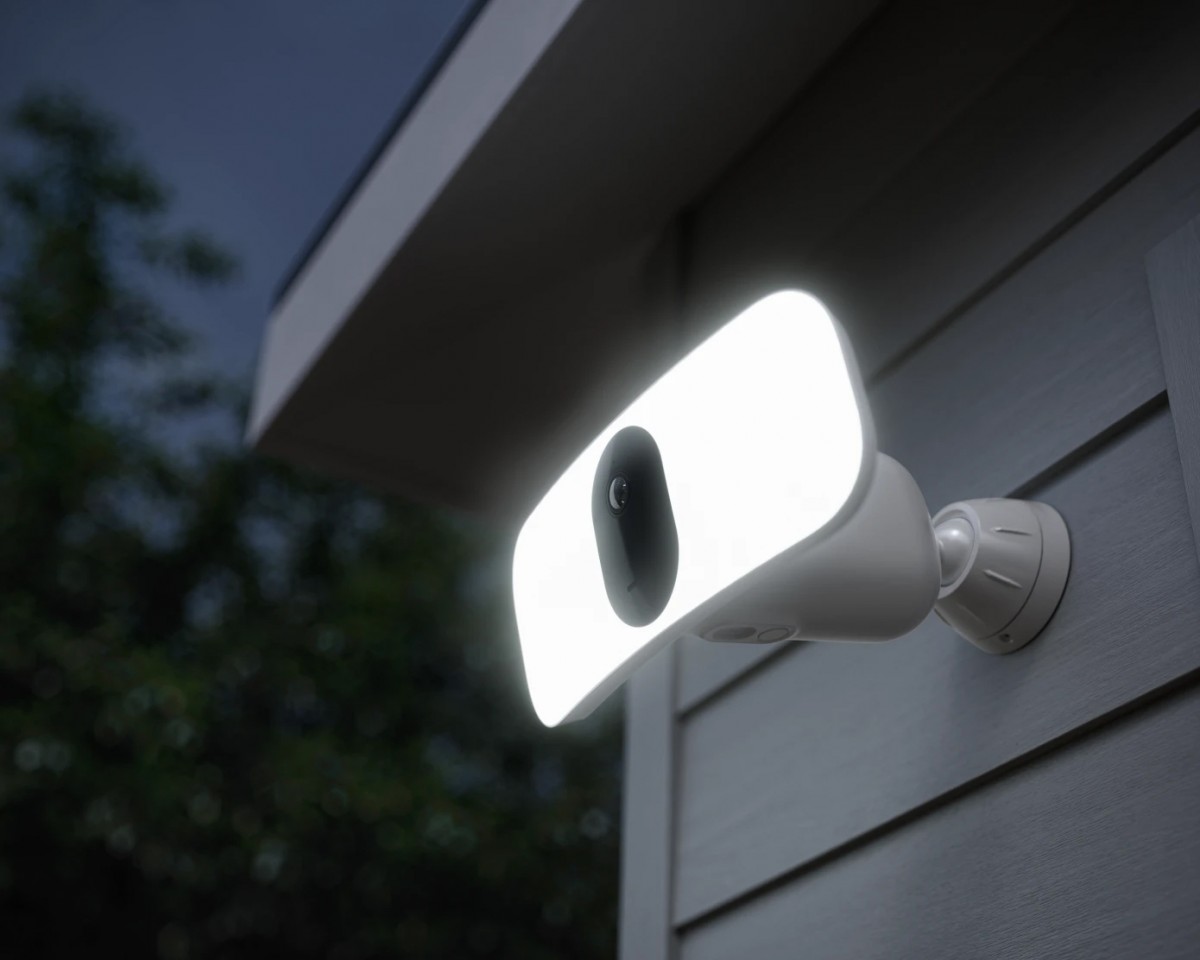
Ring Battery-powered Spotlight
The Ring battery-powered spotlight allows get the most out of Ring's home security solutions. Connect the motion activated spotlight to the Ring Bridge to enable smart controls in the Ring App and sync with other Ring Smart Lights, Ring doorbells and cameras, and select Alexa-enabled devices. Place the wire-free, weather resistant light almost anywhere—garages, sheds, porches and other areas—for the ultimate security.
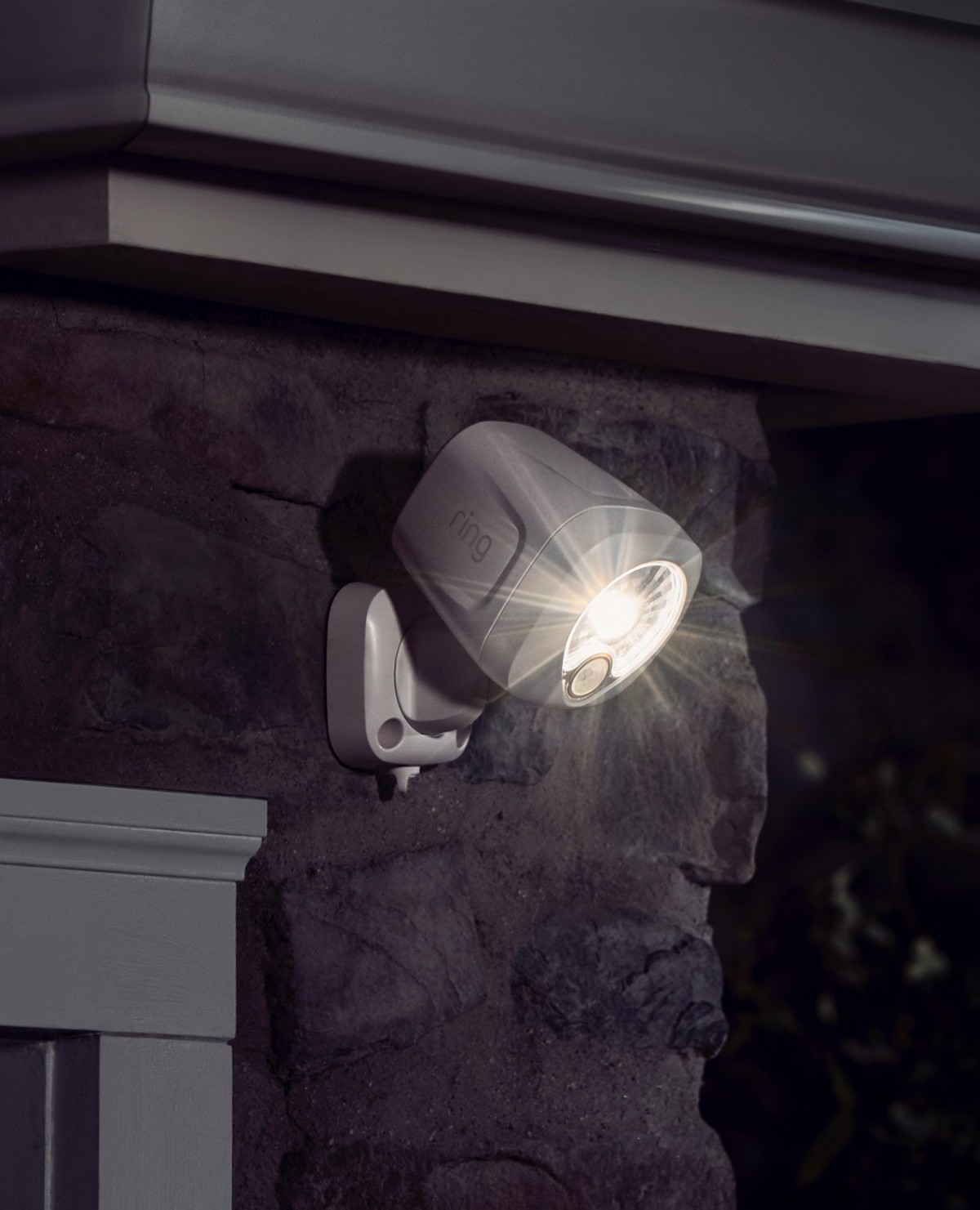
Kuna Maximus Camera Floodlight
The Maximus camera floodlight chases away night time darkness with strong brightness and wide coverage. It detects up to 70 feet away and provides adjustable 270° field of vision. Two floodlights deliver bright 2400 lumens of light that renders vibrant colors and vivid details in 1080p full HD video. From instant alerts, live video streaming, remote panic alarm, 2-way communication, motion zone customization to artificial intelligence and person/car detection, every feature is designed to help you prevent break-ins, before they happen. The WiFi security camera runs through the Kuna app.
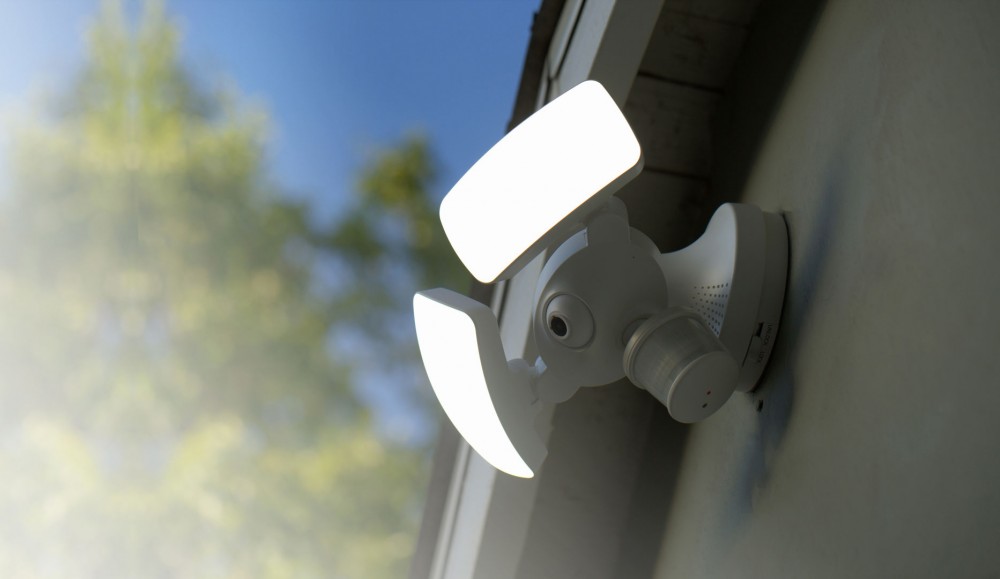
Netatmo Smart Camera Light
A smart outdoor camera with integrated flood light that can distinguish people, animals and cars and gives you access to all its features without charging any subscription fees. Videos are recorded in excellent Full HD quality. Pinch-to-zoom into the video to see every detail. The camera records only when something happens, there are no hours of empty footage. Bank-level and end-to-end encryption is used for the highest level of protection. The beautiful aluminum body gives the camera a timeless design and at the same time makes it extremely durable. The Smart Outdoor Camera is specifically designed for outdoor use and can withstand the elements: rain, snow, moisture, dust and dirt.
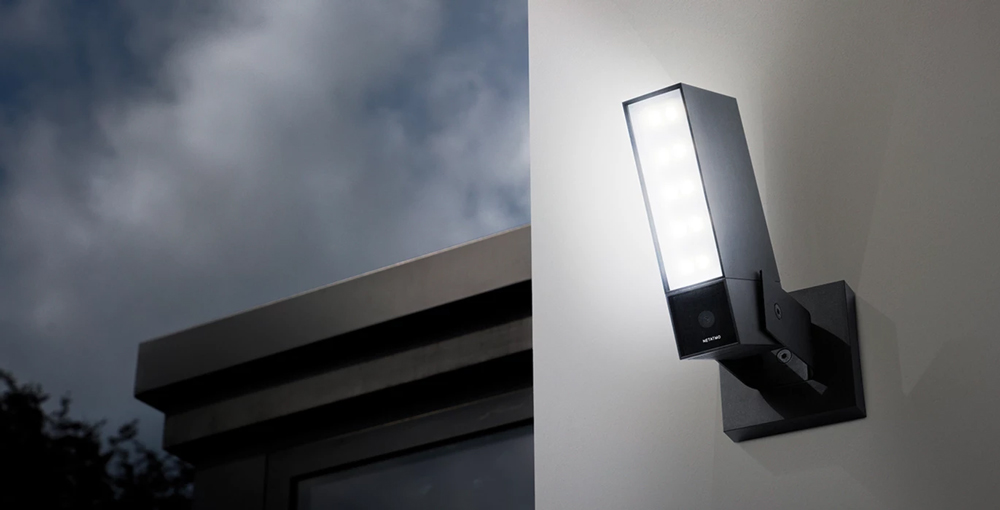
eufy Smart Floodlight with Camera
The Dual-head LED security light from eufy illuminate your outdoor spaces with 2500 lumens of bright light. The security light incorporates an array of features such as smart control, surveillance, instant notification and recording, real-time communication via 2-way audio, live streaming in full 1080p HD, local video storage, secure 256-bit encrypted connection. IP65 rated against the ingress of dust and water.
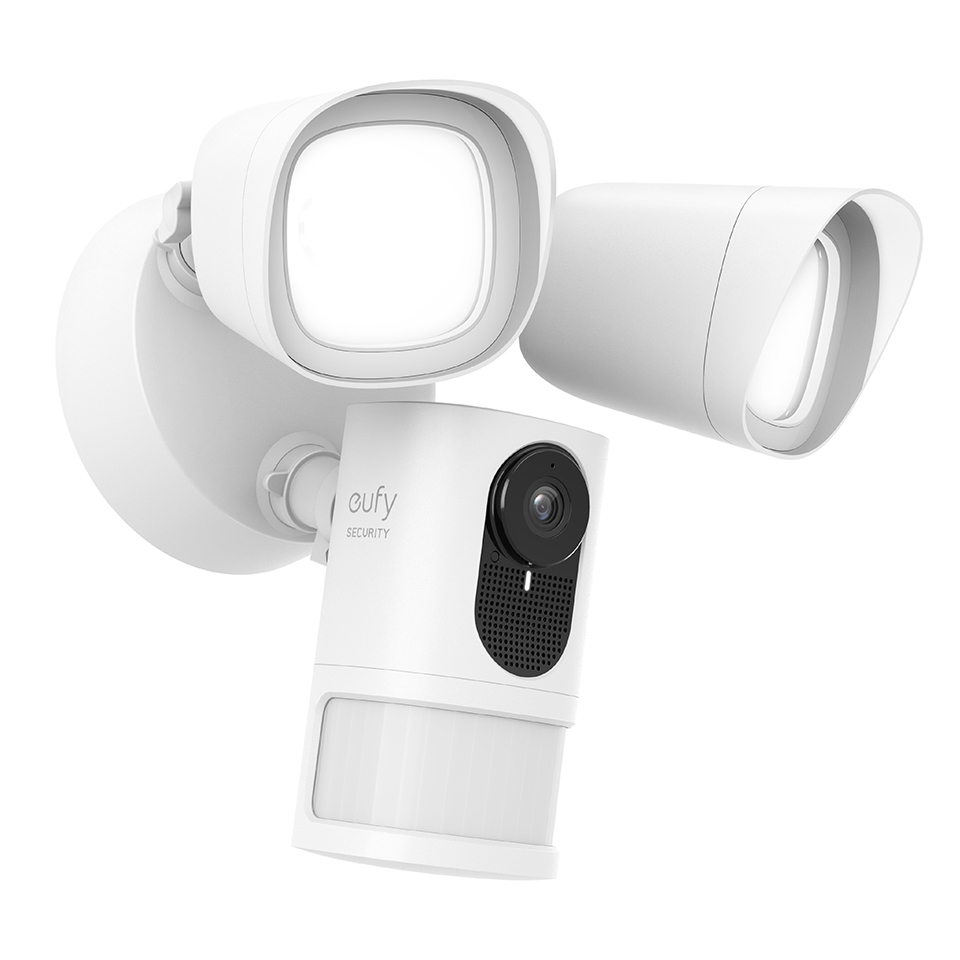
Lutec ESA LED Security Light
The Lutec ESA LED security light is an all-in-one video surveillance and security lighting solution that features a low-profile, compact housing in an architecturally sleek design. 180° wide angle PIR motion sensor with 20 meters of detection range. Adjustable lamp head with 170-degree swivel and 45-degree tilt. 720P HD camera (110° field of view). Local data storage with supplied 8GB MicroSD card (expandable up to 32GB). Integrated speaker and microphone for 2-way voice communication.
